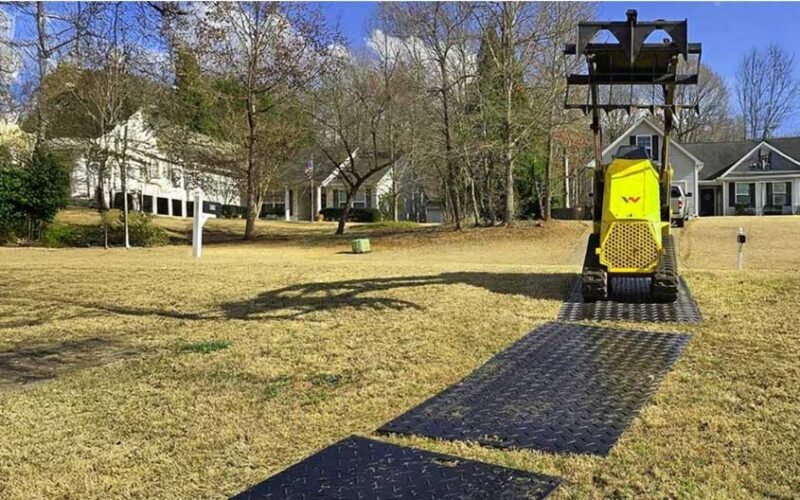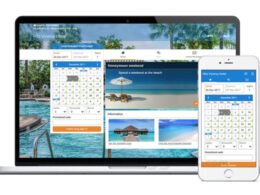Nepal has some of the most stunning trails in high-altitude and low-altitude areas, near rivers, lakes, and valleys. This is why Nepal is one of the most sought-after trekking destinations in the world.
If you are taking the first step in trekking or planning an ultimate expedition, Nepal is the first place to start with.
If you are a beginner in trekking, this guide is for you. It includes everything beginners need to know to enjoy an unforgettable trekking experience in Nepal.
Choose the Right Trek For Yourself
As someone new to trekking, you must know the trekking route that is suitable for you, budget and stamina-wise.
To start easily, you can choose a simple trek like Ghorepani Poon Hill. It is a short trek of 4 to 5 days that offers scenic views of the Annapurna region of Nepal. The Langtang Valley Trek is another easy 7-day trek that has stunning views of the Langtang Himal range, glaciers, and lush forests.
Looking for a moderately difficult trek? Annapurna Base Camp (ABC) Trek is for you. ABC trek offers another challenge with Panoramic views of the Annapurna Massif. Another mid-level trek is the Everest View Trek, which is best for you if you want to see Mount Everest without going all the way to base camp.
But if you think you can complete a difficult trek, opt for the Everest Base Camp Trek. The EBC trek takes you up to the base camp of the world’s highest peak.
Know the Best Time to Trek in Nepal
A trekking beginner in Nepal must know the best time to trek because weather conditions are crucial to completing the trek smoothly and on time.
The best time to trek in Nepal is the spring season (March to May). In this season, the sky is clear, the temperature is moderate, flowers are blooming, and the trees have spring buds. You can trek to Everest Base Camp, Annapurna Circuit, and Langtang Valley during spring.
Another best season to trek in Nepal is Autumn (September to November) when the weather is pleasant. Mardi Himal Trek is a good trek option this season.
The winter (December to February) season is cold; high-altitude regions face snowfall. However, lower altitudes are relatively warmer. Ghorepani Poon Hill, which lies at a lower altitude, is the best trek for the winter season.
The monsoon period (June to August) is not ideal for trekking because of heavy rainfall. However, in this season, you can arrange a trek in regions like Upper Mustang and Dolpo.
Things You Should Pack For A Trek
For the trek, you should include a 30 to 50L backpack, a sub-zero-rated sleeping bag, a headlamp, UV-protected & polarized sunglasses, spare batteries, and trekking poles.You can also take water containers with purification tablets, a first aid kit, and snacks like mini meat sticks or energy bars.
In terms of clothing, pack a moisture-wicking base layer, a fleece or down jacket, a waterproof jacket, trekking pants, a hat, gloves, and trekking socks. Also, invest in sturdy waterproof trekking boots to have an easy walk during your trek.
Do not include any heavy electronics or books, unnecessary clothes, expensive jewelry, or toys in your luggage.
Prepare Yourself: Physically and Mentally
Trekking in Nepal as a beginner is not easy; you have to be physically and mentally prepared.
To improve your physical fitness, you can do activities such as running, cycling, and swimming. These activities help in increasing cardiovascular stamina. You can also do leg exercises such as squats and lunges for strength training. To prepare your body for a trek, you can take long hikes with a weight-bearing backpack.
Building mental strength is equally necessary. You must stay positive, have patience, and be determined to complete the trek no matter what obstacles come, unless it’s life-threatening.
Trekking Permits & Regulations
Just like visas, international trekkers in Nepal must get permits depending on their chosen trail.
You should have a TIMS (Trekkers’ Information Management System) card, which is a mandatory permit for trekkers in Nepal.
To enter a conservation area or national park, you need permits such as the Annapurna Conservation Area Permit (ACAP) or the Sagarmatha National Park Permit.
To avoid fines during the trek, you should check the latest regulations and obtain the necessary permits in Kathmandu or Pokhara.
Understand the need for Acclimatization at High Altitudes
Proper altitude acclimatization is required to lower the risk of altitude sickness, which occurs when you trek in high-altitude regions such as Everest.
For acclimatization, you should stay hydrated, take rest days, and avoid overexerting. You can consume carbohydrate-rich food that provides energy and helps in altitude adaptation.
Choose Group Trek over Solo Trek
Some trekkers may want to trek solo, but it is not recommended for beginners. Why? Because you are new to the trek route and you may get lost on the way. More importantly, you would be your emergency responder.”
Thus, to avoid possible issues with the solo trek, taking a group trek is a better decision.
A group trek gives you a sense of security and company from fellow trekkers. You can also have social interactions and get physical support or medical help when needed.
Agencies like Mission Himalaya Treks offer guided treks where safety, order, and expert guidance are guaranteed.
Hire a Trek Guide or Porter
To enjoy a smooth and hassle-free trek, you can hire local guides for route guidance and porters to carry your luggage. Hiring them is a good way to boost the local economy.
In most cases, a professional guide is included in the group trek. Travel agencies such as Mission Himalaya Treks have skilled trek guides who are well-versed in both short and high-altitude treks.
Take All Health & Safety Measures
Beginner trekkers are new to the country, trek route, environment, and climate. Thus, precautions need to be taken.
To be safe, you should take purified water for drinking, eat freshly made meals, and take proper rest.
You should also be careful about cleanliness and safety measures. For that, you must carry hand sanitizers, biodegradable soap, toilet paper, disinfectant wipes, etc.
Always carry a first-aid kit with bandages, antiseptic wipes, pain relievers, and any personal medications for headaches or stomach issues.
Be Aware of Local Wildlife
The trekking routes of Nepal are home to many ecosystems, which include numerous animals and birds.
Animals such as bears or leopards can be unpredictable or dangerous if provoked. Thus, you must keep a safe distance. To avoid wildlife encounters, stay in a group and walk quietly.
Be Respectful Towards People and Culture
You can find Sherpa, Tamang, Magar, and Gurung people when walking on the trekking trails of Nepal. These communities have their unique religion and culture. You must be respectful to the people and their culture.
You can greet ‘Namaste’ to locals, and ask for permission before taking pictures. If visiting temples or monasteries, follow the rules and make payments if needed.
Learning a few simple phrases in Nepali can help in building relations or getting simple help.
Consider Eco-Trekking
Trek areas are naturally beautiful regions and thus deserve to stay beautiful. For that, sanitation is important.
As a tourist, you should follow the Leave No Trace principles, such as removing your waste, using refillable water bottles, etc. Try not to use plastic; use eco-friendly items.
Be Weather-Prepared
The weather in the Himalayas is unpredictable, so you need to be ready for changes at any moment.
To be ready for the changing weather, you can pack different types of clothing such as moisture-wicking shirts, fleece jackets, waterproof & windproof jackets, and trekking pants & thermal leggings.
You can also take note of weather reports before leaving for the trek, and avoid dangerous pathways.
Final Thoughts
Nepal has it all—culture, adventure, and breathtaking scenery. It offers some of the best trekking routes for adventure lovers.
If you are a beginner trekker, you must be clear about the trek you want to take, choose a suitable time to trek, prepare yourself physically and mentally, pack trek essentials, and be familiar with the weather, wildlife, and local culture. Also, you should carry trek gear, trek clothing, and a first-aid kit.
Ready to explore the Himalayas? Mission Himalaya Treks is here for you. With them, your first trek in Nepal becomes enjoyable, safe, and memorable.










